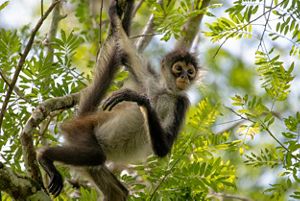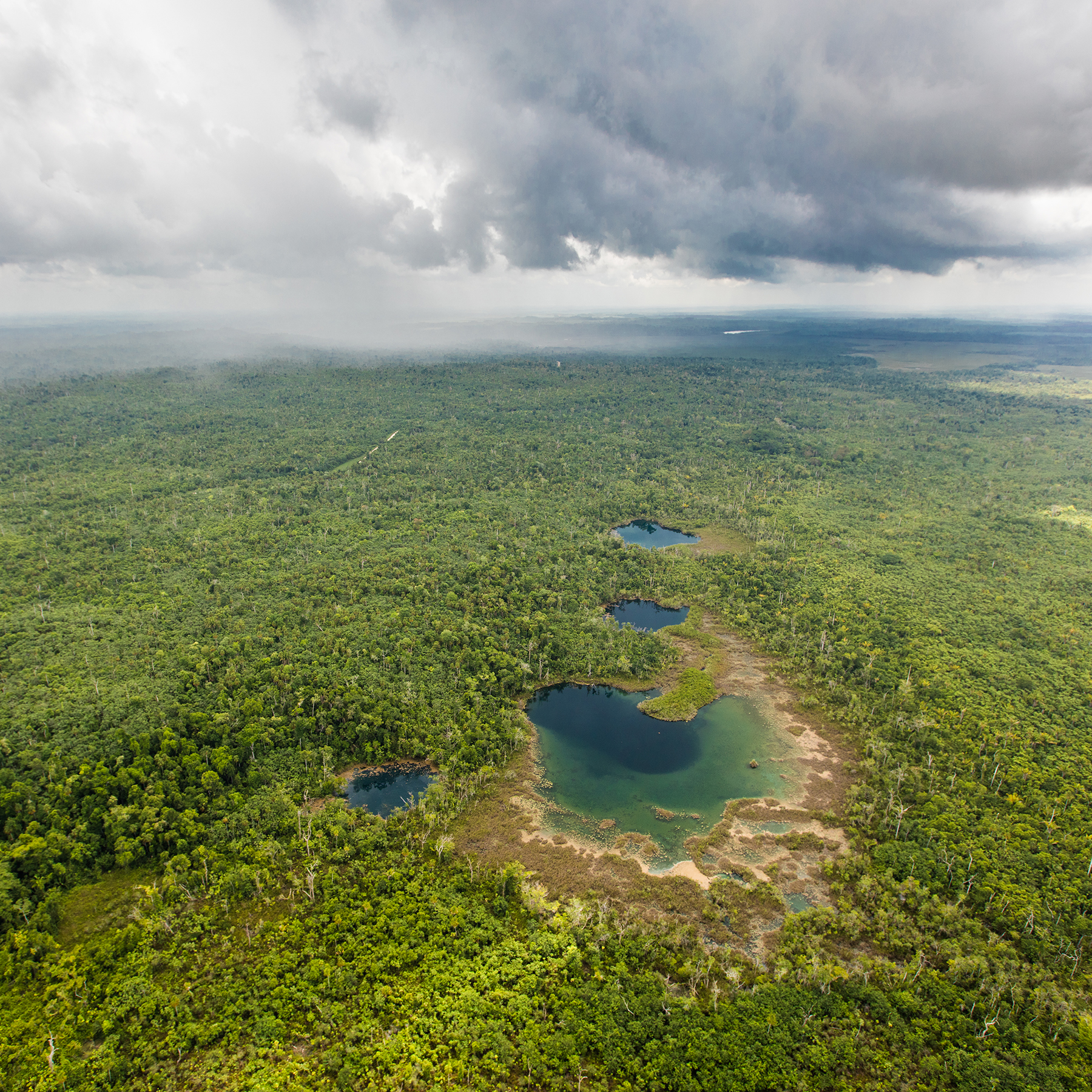Saving an Ancient Place to Help Solve a Modern Problem

Imagine you are in the Maya Forest of Belize, surrounded by innumerable shades of green. You hear the roar of Howler monkeys and lively chatter of parrots and hundreds of other bird species. You are in a place that witnessed an ancient civilization rise, thrive and fade.
Today, it is the forest itself, and all the mystery it holds, that is at risk of disappearing. The region’s tropical forests are being cleared at an alarming rate by logging to make way for agriculture, cattle ranching, and development. Between 1986 and 2018, the nation’s forest stocks declined by more than 28%. When forests are removed, the carbon they store escapes into the atmosphere. Loss of tropical forests such as those in Belize is responsible for about 20% of global greenhouse gas emissions—a significant factor in the face of climate change.
That’s why TNC facilitated a coalition of more than a dozen entities that recently conserved 236,000 acres of Belize’s Maya Forest.
This tropical rainforest is home to at least 70 species of mammals, such as jaguars, pumas, and howler and spider monkeys, in addition to hundreds of species of resident and migratory birds. It also helps to safeguard three major watersheds tha tsupply the country with a third of its drinking water and a quarter of its water for irrigation.
“This area has great historical and cultural significance, and it is impossible to overstate its ecological importance,” says Julie Robinson, TNC’s program director in Belize. “And just by ensuring it will endure, we are helping to solve the most urgent problem of our time—climate change.” TNC’s climate scientists estimate that using natural solutions to avoid greenhouse gas emissions, including conserving at-risk priority landscapes like the Maya Forest, can deliver about one third of the global emissions reductions needed by 2030.
Quote: Wendy Paulson
This project is an example of remarkable conservation action, with innovative financing, innovative partnerships, and unusual levels of collaboration.



Impact Report 2021
Together, we find a way






